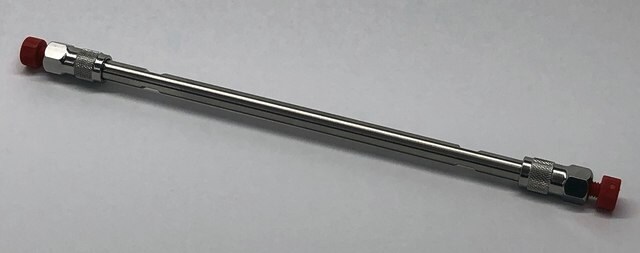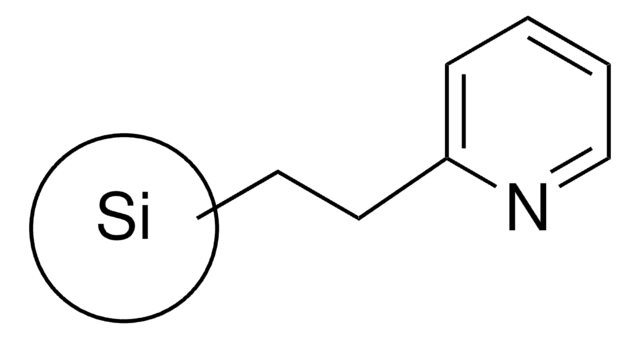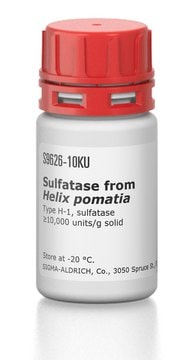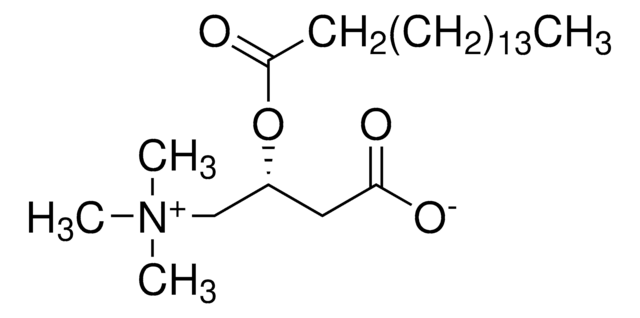54127-U
2-(2-Pyridyl)ethyl Silica Gel
bed wt 100 mg, volume 1 mL, pk of 108
About This Item
Polecane produkty
skład
bed wt, 100 mg
opakowanie
pk of 108
metody
solid phase extraction (SPE): suitable
pojemność
1 mL
grupa aktywna macierzy
WAX phase
Zastosowanie
food and beverages
metoda separacji
ion exchange
Powiązane kategorie
Opis ogólny
Sample Matrix Compatibility: Organic or aqueous Solutions
- Weak anion exchanger ideal for extracting strong basic compounds that remain charged at all pH levels
- Unlike conventional weak anion exchange SPE phases such as -NH2 (aminopropyl) that have a pKa of 9-10, a pH ≤ 7 is required to protonate or ionize the stationary phase to facilitate analyte retention. Elution is typically done by increasing the pH to 11 resulting in neutralization of the SPE phase.
- 2-(2-pyridyl)-ethyl silica gel has a pKa of ~6. Therefore, analyte elution is feasible at a pH ≥ 7. This characteristic is important for extracting analytes that are not stable (e.g. hydrolyzes) at high pHs typically required for elution when using traditional weak anion exchangers.
- Ideal for extracting acyl-coenzyme A esters from tissue.
- For more information, please see: Minkler, P.E., Kerner, J., Ingalls, S.T., Hoppel, C.L., Novel isolation procedure for short-, medium-, and long-chain acyl-coenzyme A esters from tissue, Analytical Biochemistry 376 (2008) 275–276
Hasło ostrzegawcze
Warning
Zwroty wskazujące rodzaj zagrożenia
Zwroty wskazujące środki ostrożności
Klasyfikacja zagrożeń
Eye Irrit. 2 - Skin Irrit. 2 - STOT SE 3
Organy docelowe
Respiratory system
Kod klasy składowania
11 - Combustible Solids
Klasa zagrożenia wodnego (WGK)
WGK 3
Temperatura zapłonu (°F)
Not applicable
Temperatura zapłonu (°C)
Not applicable
Wybierz jedną z najnowszych wersji:
Certyfikaty analizy (CoA)
It looks like we've run into a problem, but you can still download Certificates of Analysis from our Dokumenty section.
Proszę o kontakt, jeśli potrzebna jest pomoc Obsługa Klienta
Masz już ten produkt?
Dokumenty związane z niedawno zakupionymi produktami zostały zamieszczone w Bibliotece dokumentów.
Produkty
SPE retention mechanism in this case is based on the electrostatic attraction of charged functional groups of the analyte(s) to oppositely charged functional groups on the sorbent.
Protokoły
Retention occurs through polar interaction between the sorbent and analytes. Typical sample matrices that can be employed in normal-phase SPE include hydrocarbon or fatty oils diluted in a solvent like hexane, isooctane, chlorinated solvent, THF, diethyl ether, or ethyl acetate.
Nasz zespół naukowców ma doświadczenie we wszystkich obszarach badań, w tym w naukach przyrodniczych, materiałoznawstwie, syntezie chemicznej, chromatografii, analityce i wielu innych dziedzinach.
Skontaktuj się z zespołem ds. pomocy technicznej









